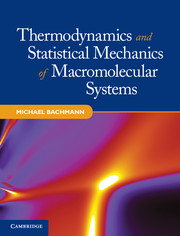Book contents
- Frontmatter
- Dedication
- Contents
- Preface and outline
- 1 Introduction
- 2 Statistical mechanics: A modern review
- 3 The complexity of minimalistic lattice models for protein folding
- 4 Monte Carlo and chain growth methods for molecular simulations
- 5 First insights to freezing and collapse of flexible polymers
- 6 Crystallization of elastic polymers
- 7 Structural phases of semiflexible polymers
- 8 Generic tertiary folding properties of proteins on mesoscopic scales
- 9 Protein folding channels and kinetics of two-state folding
- 10 Inducing generic secondary structures by constraints
- 11 Statistical analyses of aggregation processes
- 12 Hierarchical nature of phase transitions
- 13 Adsorption of polymers at solid substrates
- 14 Hybrid protein–substrate interfaces
- 15 Concluding remarks and outlook
- References
- Index
5 - First insights to freezing and collapse of flexible polymers
Published online by Cambridge University Press: 05 May 2014
- Frontmatter
- Dedication
- Contents
- Preface and outline
- 1 Introduction
- 2 Statistical mechanics: A modern review
- 3 The complexity of minimalistic lattice models for protein folding
- 4 Monte Carlo and chain growth methods for molecular simulations
- 5 First insights to freezing and collapse of flexible polymers
- 6 Crystallization of elastic polymers
- 7 Structural phases of semiflexible polymers
- 8 Generic tertiary folding properties of proteins on mesoscopic scales
- 9 Protein folding channels and kinetics of two-state folding
- 10 Inducing generic secondary structures by constraints
- 11 Statistical analyses of aggregation processes
- 12 Hierarchical nature of phase transitions
- 13 Adsorption of polymers at solid substrates
- 14 Hybrid protein–substrate interfaces
- 15 Concluding remarks and outlook
- References
- Index
Summary
Conformational transitions of flexible homopolymers
In this chapter, we will discuss general similarities and differences in crystallization and collapse transitions under the influence of finite-size effects for flexible polymer chains. The analysis of conformational transitions a single polymer in solvent can experience is surprisingly difficult. In good solvent (or high temperatures), solvent molecules occupy binding sites of the polymer and, therefore, the probability of noncovalent bonds between attractive segments of the polymer is small. The dominating structures in this phase are dissolved or random coils. Approaching the critical point at the Θ temperature, the polymer collapses and in a cooperative arrangement of the monomers, globular conformations are favorably formed. At the Θ point, which has already been studied over many decades, the infinitely long polymer behaves like a Gaussian chain, i.e., the effective repulsion due to the volume exclusion constraint is exactly balanced by the attractive monomer–monomer interaction. Below the Θ temperature, the polymer enters the globular phase, where the influence of the solvent is small. Globules are very compact conformations, but there is little internal structure, i.e., the globular phase is still entropy-dominated. For this reason, a further transition toward low-degenerate energetic states is expected to happen: the freezing or crystallization of the polymer. Since this transition can be considered as a liquid-solid phase separation process, it is expected to be of first order, in contrast to the Θ transition, which exhibits characteristics of a second-order phase transition [117, 118].
- Type
- Chapter
- Information
- Publisher: Cambridge University PressPrint publication year: 2014



